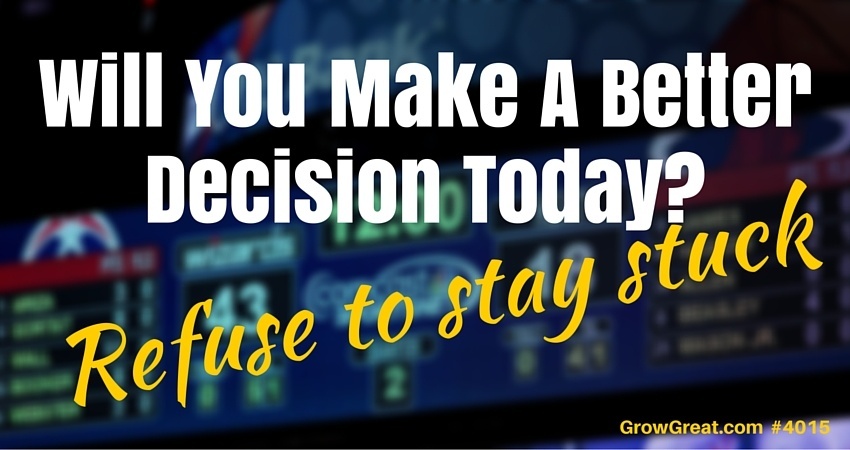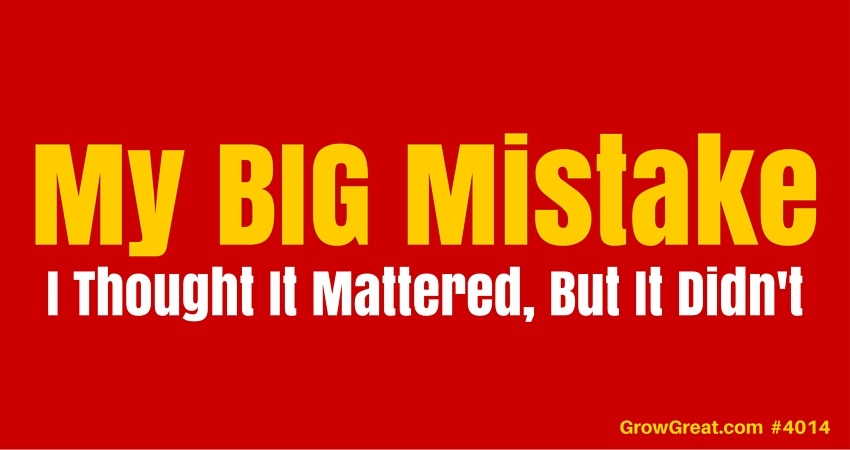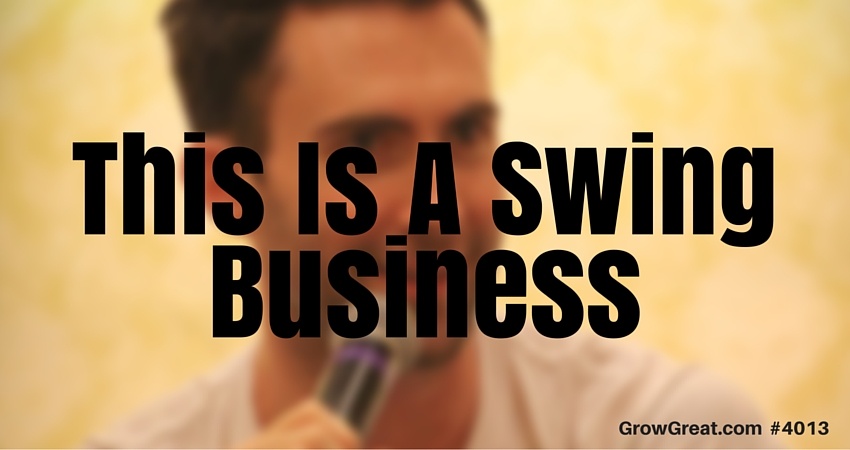Managing The Energy Of The Workplace #4018
Podcast: Play in new window | Download (Duration: 29:11 — 27.1MB)
Subscribe: Apple Podcasts | Spotify | Email | RSS | More

If this is your first foray into BulaNetwork.com or the Grow Great podcast – it’s important that you know my world-view and philosophy of leadership. People matter! I don’t mean in some lip-service way. I mean people really do matter. They make all the difference. For good. Or bad.
Let me bullet-point it for you so it’ll be easier and faster:
- People mostly want to get up in the morning energized to do good work.
- If given the opportunity, most people would prefer to make a positive difference.
- People crave a positive sense of accomplishment.
- We manage the work. We lead people.
- People deserve great leadership.
- Great leadership serves the people by always doing the right thing.
- Always be honest, be competent, give more and make it right.
Those are the basics of who and what I am. Everything I do reflects these important things. So that’s my bias – if you care to call it that. It’s my perspective and it may help you better understand today’s show, and all the content you can find at GrowGreat.com (which by the way was once branded HigherHumanPerformance.com – I still like that and you can enter that into your browser and arrive at the same place; growing great is very much still focused on helping people in the quest for higher human performance).
 Some months ago I began to really focus on my own energy. At first I didn’t use the word, energy. I wasn’t sure how to quantify what I was feeling, but one day that word arrived by way of a book my daughter loaned me, The Energy Bus. I still haven’t read it, but when she handed it to me I instantly had THE word to attach to what I was feeling and thinking. Energy.
Some months ago I began to really focus on my own energy. At first I didn’t use the word, energy. I wasn’t sure how to quantify what I was feeling, but one day that word arrived by way of a book my daughter loaned me, The Energy Bus. I still haven’t read it, but when she handed it to me I instantly had THE word to attach to what I was feeling and thinking. Energy.
Our Work Hinges On How Well We Manage Our Energy
By “work” I mean our performance. I don’t mean just movement, or action. I mean getting things done that move our enterprises forward.
Let’s back up to that first bullet-point – People mostly want to get up in the morning energized to do good work. That’s important because this is where so many companies get it wrong.
If people – this includes US – want to get up in the morning energized to do good work, then they have to fully understand how their work fits. They have to know and understand that their work matters. They have to see their work in the context of the bigger picture. In short, they must see the value of their work.
Motivation is the energy we each bring with us to do the work. Inspiration is what leaders (or others) can supply to encourage us. Both can flag and waver if we’re not careful. Of the two, motivation is the longer-term value. You know this every time to attend a seminar or conference that you find valuable. You get jacked up and excited sitting in that hotel ballroom listening to this keynote speaker. Then Tuesday morning happens and that inspiration is gone. Poof. Vanished. And it was just 2 days ago you felt like you could conquer the world. Such is the nature of inspiration, even world-class inspiration.
Motivation on the other hand is driven by many things. Among them the reasons you’re doing what you’re doing. You’re supporting your family. You’ve got other things that matter to you – things that drive you work hard, and well. Mostly, those don’t vanish. Poor health or some calamity in life can create a hiccup, making your motivation (energy) waver, but hopefully you battle back. Everybody faces challenges. How well we navigate those challenges determines how successful we are – and how valued we are at work.
It’s all about energy management. I used the pronoun “we” – our work hinges on how well WE manage our energy – because too many people want to surrender ownership. Some are even deluded to think other people do indeed possess control of their energy. Nobody holds the key to your energy except YOU. You’re driving your own energy bus. If you refuse to drive, then that’s on you.
Leaders Impact Energy
For starters, leaders have the task of incorporating people into the enterprise. That means onboarding new people. Onboarding is that official HR term. I don’t like it, but it helps you know what I mean. I hate it because it’s too impersonal. And maybe it sounds too close to waterboarding. 😉
Simply put, it’s the task of making people feel at home in a new company or a new role. It’s supplying people with the information and resources they need in order to soar. Leadership must make sure people clearly see and understand how their work impacts the overall success of the enterprise. Equally important, they must understand what success looks like. How will their performance be judged? How will they know if they’re succeeding or not? That’s the job of leadership to make sure all those answers are promptly provided BEFORE the person begins the actual work.
I know, lots of us fail right there. Well, today’s the day to stop failing at this critical beginning. If you’ve got people on your roster who were never properly integrated into their role, then go back and get that done today. Sit down with them and apologizing for failing them. You can’t neglect doing this work. Assume that time will fix it, and you’ll be making an enormous mistake. The only thing time will bring you is entropy and slippage. Things will surely grow worse, not better. It’s the leader’s job to intervene and stop entropy. You do that by being proactive and making sure people have all they need so they can achieve success.
If leaders don’t do that, then I don’t know why leaders are even needed? Serving the people is THE reason for leaders to even exist. It’s not about being large and in charge. It’s about being in a position to do things necessary to get the crap out of the way so people can do the best work possible. Authority of leadership enables those roadblocks and speed bumps to be removed. Get busy removing the first one – a lack of understanding about why the person is even in the company and why their work (their performance) matters. Make sure every single person in your organization – from the highest on the food chain to the lowest – sees how their work impacts the whole. Don’t end your meeting with the employee until it’s clear they see how they matter, and how they fit. And remember to make sure they know how to tell if they’re succeeding or not.
Sometimes people are succeeding, but they feel like they’re failing. That’s leadership’s responsibility (and fault). It’s a morale killer. Few things will disrupt your workforce more than people who don’t see the importance of their role, their contribution — and people who just never seem to know if they’re doing well, or poorly. Give them clear vision.
Candor.
It’s one of my all-time favorite leadership words. Some people mistake it for embracing conflict. That’s narrow-minded. Candor is honesty. It’s not unkind, or brutal. It’s not conflict oriented. Mostly, it’s prompt, candid conversation designed to help clarify, inform, instruct, correct — and perform other positive communication outcomes. Let me illustrate.
True story. A worker with a disgruntled, toxic attitude and communication is already on a PIP (performance improvement plan). She’s been reprimanded and her poor behavior has been clearly outlined along with recommendations on the actions she can take to turn things around. It’s about 20 days into the plan she leaves the office at quitting time. Earlier in the day the staff was informed of a scheduled inventory, planned in 3 weeks. Plenty of time for people to make adjustments to their personal schedules. It’s going to require team members to work an additional 2 to 4 hours, depending on their department and role. These are ordinary, regular affairs that everybody understands are just part of the company’s operations. Our PIP employee lobs a verbal grenade on her way out the door, “It’s ridiculous to drop that on us today.” As she’s existing the door, the boss hears it. She’s still in the doorway when he firmly, but politely says, “Gayle (no, that’s not her name), can I have a quick moment, please?”
Gayle joins the boss as they walk together back to his office. You’re seeing candor in action. It’s prompt. He’s not going to let her leave the building without addressing this action.
Keep in mind, Gayle is already on a PIP. Her job is at risk. Her behavior have impacted others in her office. Negatively. The PIP was designed to help her turn things around because her work – technically speaking – it good. She knows her job and does it well. However, she’s an ongoing distraction to the rest of the team and her constant complaining creates a tension that negatively impacts the whole group. She’s been told that and part of the PIP involves ongoing help, support and feedback. Sadly, for the boss, he’s discouraged now because for the past 20 days or so she’s done better. He’s told her so and he’s encouraged her to keep it up. Now, he’s feeling like she’s taking a major step backwards.
He asks her to sit down at the conference table in his office, where he joins her. “I don’t want to keep you long, Gayle, but I heard your remark and I can’t ignore it,” he begins. “Gayle, do you fully understand – I mean, really understand – how your work impacts our organization?”
“Yes, sir, I think so,” she says. “And I’m sorry for spouting off about the inventory schedule.”
“Gayle, I want to make sure I’m serving you well by helping you every way I can,” he continues. “Part of that is making sure you see the big picture and where you fit in it.”
“I think I do, sir. We’ve talked about that in the past, ” says Gayle.
“Then help me understand why you felt compelled to make that remark as you exited the building?” he asked.
“I don’t know. I just don’t like doing inventory,” she replied.
On and on it goes for another 5 minutes or so. The boss tells her that he’s not going to tolerate her poor behavior because it’s not profitable for her, or anybody else on the team. He encourages her by telling her that she’s capable of doing high performing work. And because others look to her, she’s got a responsibility to lead, too. He’s firm, fair and kind. She’s appropriately ashamed and apologizes. She also assures him she’s going to work harder on curbing her bad habits. He makes sure she knows her future is in her own hands. From start to finish, it took about 8 minutes.
Did it involves a bit of conflict? Sure. Was it prompt? Absolutely. Real time feedback is the trademark of true candor. Was it appropriate and respectful? Yes. There’s no other way it should roll. Did it have the impact? It seemed to, but time will tell. The leader isn’t fully in charge of the response. Gayle is. It’s now up to her to do better work.
Leaders often ignore and avoid candor. Or they behave badly themselves. The boss could have yelled and screamed. He could have belittled Gayle. He could have ripped her up one side, down the other and felt better about himself. But none of those things would have served Gayle, or the company. They would have all been selfish acts. And they would have all robbed Gayle of energy while maybe giving the boss more. But that’s poor energy management. And bad leadership.
So What Can Leaders Do To Positively Impact Energy?
- Begin at the beginning. When employees join the company, or assume a new role, spend time “onboarding” them. Scrutinize your onboarding process. Make it spectacular. Do not skip this step. Don’t get it wrong. It’s the foundation of everything else. Make sure the employee understands how valuable their work is, and how important it is to the overall organization. The object is to: a) make the employee feel and know they’re valued, b) make sure they understand they’ve got all the resources and help to be high performers, c) insure they understand what success looks like and d) make sure they know how they and their work fit the rest of the big puzzle that is the company. If you fail at any one of those, then go back and re-engineer your onboarding process.
- All acts of management and leadership must be congruent with the beginning. You’re going to have to commit to remaining true to all those onboarding messages. Remember, we manage the work. We lead the people. While the example with Gayle demonstrates the negative impact of a poor attitude, it’s difficult (if not impossible) to serve a person with a poor attitude. And it’s made worse when the person is like Gayle – they’re doing good work themselves. The boss put her on a PIP not because of the quality of her work, but because of the negative impact she was having on others within her team. Two exit interviews with previous employees had revealed Gayle was a major factor in their leaving. She constantly complained and griped about perceived injustices done to her. The leadership had specific, distinct issues that needed to be addressed with her. It wasn’t an opinion-based PIP. That wouldn’t have worked. The only way for management and leadership to be congruent with the beginning is to make sure feedback is objective, quantifiable and susceptible to specific recommendations for correction, or improvement.
- Work is done by people. Always treat people with respect. Firm doesn’t mean unkind. Or heavy-handed. Great leaders calculate the most appropriate response to good and poor performance. The goal is to always improve. Growth is the objective. Keep the objectives in mind. It’s never about YOU. It’s not about you showing off your authority. You must make it about serving the employee to do better work.
- Listen. Pay attention. Don’t jump to conclusions. Few things will more quickly improve your leadership than shutting your mouth and opening your eyes and ears. Watch any episode of Undercover Boss and you’ll quickly see it in action. I’m always fascinated at a CEO or other C-level officer who goes undercover. They’re not doing any high tech surveillance or hardcore data crunching. They’re out among the troops. Working side by side, watching, listening and paying attention. No spreadsheets. No analysis, other than the human kind that involves listening, watching and talking. Human connections result in learning where the warts are. Sometimes those warts are years and years old. They were visible the whole time. The CEO was just too distracted, too focused on things that didn’t matter to notice. Now, she sees them. Back to the C-suite to make the changes that should have been made long ago — if only she had known. Gather information. Get it from the lowest level possible. Keep your eyes open. And listen. Refrain from making judgments until you’ve got sufficient evidence upon which to base a good (wise) decision.
- Be reactive. Everybody tells you how urgent it is for you to be proactive. Forget that. It’s way more important for you to be reactive. Faster! Don’t waste your time trying to be proactive. Instead, get faster – way faster – about reacting to the market and the performance of your people. Adjust quicker than you ever have before. Make speed your competitive edge. And I don’t mean knee-jerk. I mean thoughtful, but intentional. You can get fast and still be thoughtful and intentional. You do it at home all the time. Your husband or wife gets upset and you react. You work through it. Or, you stew about it. Stewing doesn’t work at home, or work. Act. Today. Now. Base it on the best evidence you can gather. Start taking more shots than you’ve ever taken before. It doesn’t mean you don’t take aim. Do that, too.
I’m sure there are other things you can add to create your own list. Do it. Figure it out. Embrace the people who make you look good. Serve them. Well.
Maybe you’ll find some inspiration in my personal business philosophy. You can apply it to management and leadership.

Now, go to work. Today. Right now. Put some high energy into your workplace! And into your own life, too.

Subscribe to the podcast
 To subscribe, please use the links below:
To subscribe, please use the links below:
- Click Here to Subscribe via iTunes
- Click Here to Subscribe via RSS (non-iTunes feed)
- Click Here to Subscribe via Stitcher
If you have a chance, please leave me an honest rating and review on iTunes by clicking Review on iTunes. It’ll help the show rank better in iTunes.
Thank you!
Managing The Energy Of The Workplace #4018 Read More »











